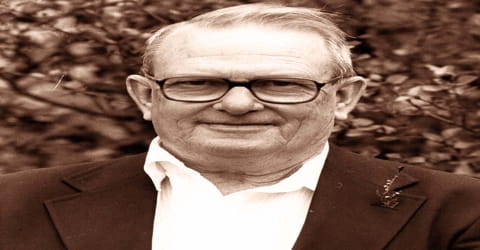Biography of Allan McLeod Cormack
Allan McLeod Cormack – South African American particle physicist.
Name: Allan McLeod Cormack
Date of Birth: February 23, 1924
Place of Birth: Johannesburg, South Africa
Date of Death: May 7, 1998 (aged 74)
Place of Death: Winchester, Massachusetts, United States
Occupation: Physicists
Father: George Cormack
Mother: Amelia MacLeod Cormack
Spouse/Ex: Barbara Jeanne Seavey (m. 1950)
Children: Margaret Cormack, Jean Cormack, and Robert Cormack
Early Life

A South African-born American physicist who, with Godfrey Hounsfield, was awarded the 1979 Nobel Prize for Physiology or Medicine for his work in developing the powerful new diagnostic technique of computerized axial tomography (CAT), Allan McLeod Cormack was born on February 23, 1924, in Johannesburg, South Africa. Cormack was unusual in the field of Nobel laureates because he never earned a doctorate degree in medicine or any other field of science.
Though his primary area of research was nuclear physics and particle physics, Cormack was noted for his contributions towards X-ray computed tomography. After completing his graduation and post graduation studies in physics and crystallography respectively, he took up research at the St. John’s College, Cambridge. Between 1950 and 1956, he worked as a lecturer at the University of Cape Town following which he spent a sabbatical year doing research at the Harvard University. In 1957, he commenced his job at Tufts University. He remained at the university throughout his career, and also served as Chairman of the Physics Department from 1968 to 1976. In the 1960’s he came up with a mathematical formula that enabled the compilation of a precise image developed from data collected measurements of X-rays passing through the body from various directions. Though Allan M. Cormack and Sir Godfrey Newbold Hounsfield conducted studies independently, they were jointly awarded the 1979 Nobel Prize in Physiology or Medicine for ‘for the development of computer assisted tomography’. He was among the few laureates to receive the Nobel Prize in Physiology or Medicine without having earned a doctorate degree in medicine or any other field of science.
Childhood, Family and Educational Life
A South African-American physicist, Allan McLeod Cormack was born on 23 February 1924 at Johannesburg in South Africa. His father, George Cormack, was an engineer and mother, Amelia MacLeod Cormack, worked as a teacher. He had two older siblings.
Cormack attended Rondebosch Boys’ High School in Cape Town, where he was active in the debating and tennis teams. He received his B.Sc. in physics in 1944 from the University of Cape Town and his M.Sc. in crystallography in 1945 from the same institution. He was a doctoral student at Cambridge University from 1947-49, and while at Cambridge he met his future wife, Barbara Seavey, an American physics student.
Personal Life
On 6 January 1950, Allan McLeod Cormack married Barbara Jeanne Seavey. The couple had three children – daughters, Margaret Cormack, Jean Cormack and a son, Robert Cormack.
Career and Works

After graduating from the University of Cape Town in 1944 Allan McLeod Cormack pursued advanced studies there and at the University of Cambridge. He was a lecturer at Cape Town from 1950 to 1956 and then, after a year’s research fellowship at Harvard University, became an assistant professor of physics at Tufts University. His main research at Tufts centered on the interaction of subatomic particles. He advanced to full professor in 1964, was chairman of the department from 1968 to 1976, and retired in 1980. He became a U.S. citizen in 1966.
In 1950, Cormack shifted to Cape Town to join the University of Cape Town as a lecturer in the physics department. In Cape Town, there were very few nuclear physicists and he was mentored by the head of the physics department Professor R. W. James, which enabled him to gain insights and later publish papers on the subject. Between 1956 and 1957, he spent a sabbatical at the Harvard cyclotron with professors Norman Ransey and Richard Wilson performing experiments on nucleon-nucleon scattering. During this leave, he was offered a position of professor at the Tufts University which he accepted in 1957.
A part-time position as a physicist for a hospital radiology department first aroused Cormack’s interest in the problem of X-ray imaging of soft tissues or layers of tissue of differing densities. The two-dimensional representations of conventional X-ray plates were often unable to distinguish between such tissues. More information could be gained if X rays of the body were taken from several different directions, but conventional X-ray techniques made this procedure problematic.
In the early years of the 1960s, Cormack explained the method of calculating details of the flat section of soft tissues by the measurements of the reduced strength of X Rays that pass through various angles. He thereby presented the mathematical technique for the computerized axial tomography (CAT) scan. The CAT scan was utilized to provide a clear map of the tissues within the cross-section of the body by utilizing data captured by electronic detectors and X-Ray that are rotated around the body. He continued his research and work in particle and nuclear physics.
His results were subsequently published in two papers in the Journal of Applied Physics in 1963 and 1964. These papers generated little interest until Hounsfield and colleagues built the first CT scanner in 1971, taking Cormack’s theoretical calculations into a real application. For their independent efforts, Cormack and Hounsfield shared the 1979 Nobel Prize in Physiology or Medicine.

During the period 1970-1972, Cormack became aware of the progress and improvements made in the field of CT-scanning and since spent time understanding the developments and tackling related issues.
Awards and Honor
Allan McLeod Cormack was jointly awarded the Nobel Prize for Medicine in 1979 with electrical engineer Sir Godfrey N. Hounsfield.
In 1990 Cormack received the National Medal of Science by the President of the United States.
Cormack was an elected member of professional societies like International Academy of Science, American Academy of Arts and Sciences, National Academy of Sciences and American Physical Society.
Death and Legacy
Allan McLeod Cormack was suffering from cancer and died on 7 May 1998 at Massachusetts, USA. He was 74 years old at the time of his death.
Cormack was a physicist whose primary areas of interest in research were nuclear and particle physics. He was noted for his work related to the development of the diagnostic technique computerized axial tomography.
Cormack was posthumously awarded the Order of Mapungubwe on the 10th December 2002 for outstanding achievements as a scientist and for co-inventing the CT scanner.
Information Source:
















